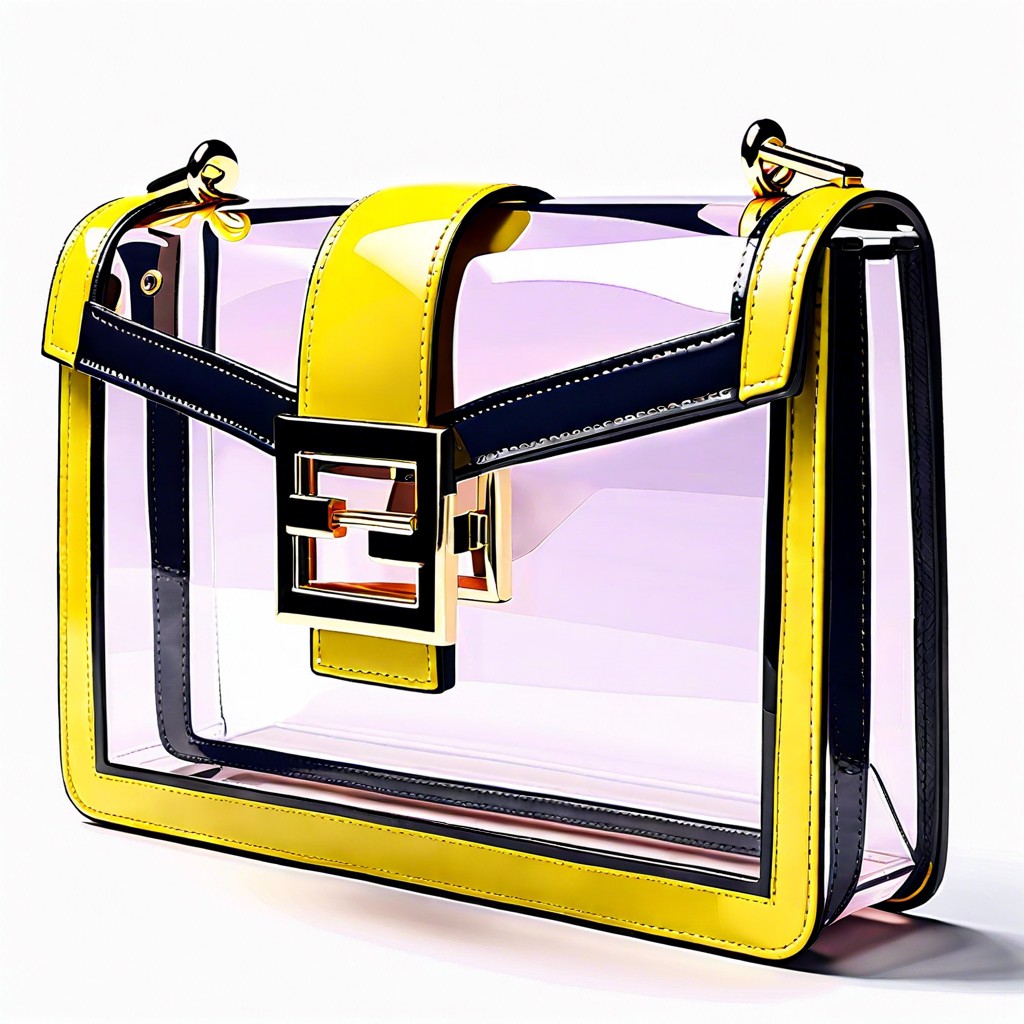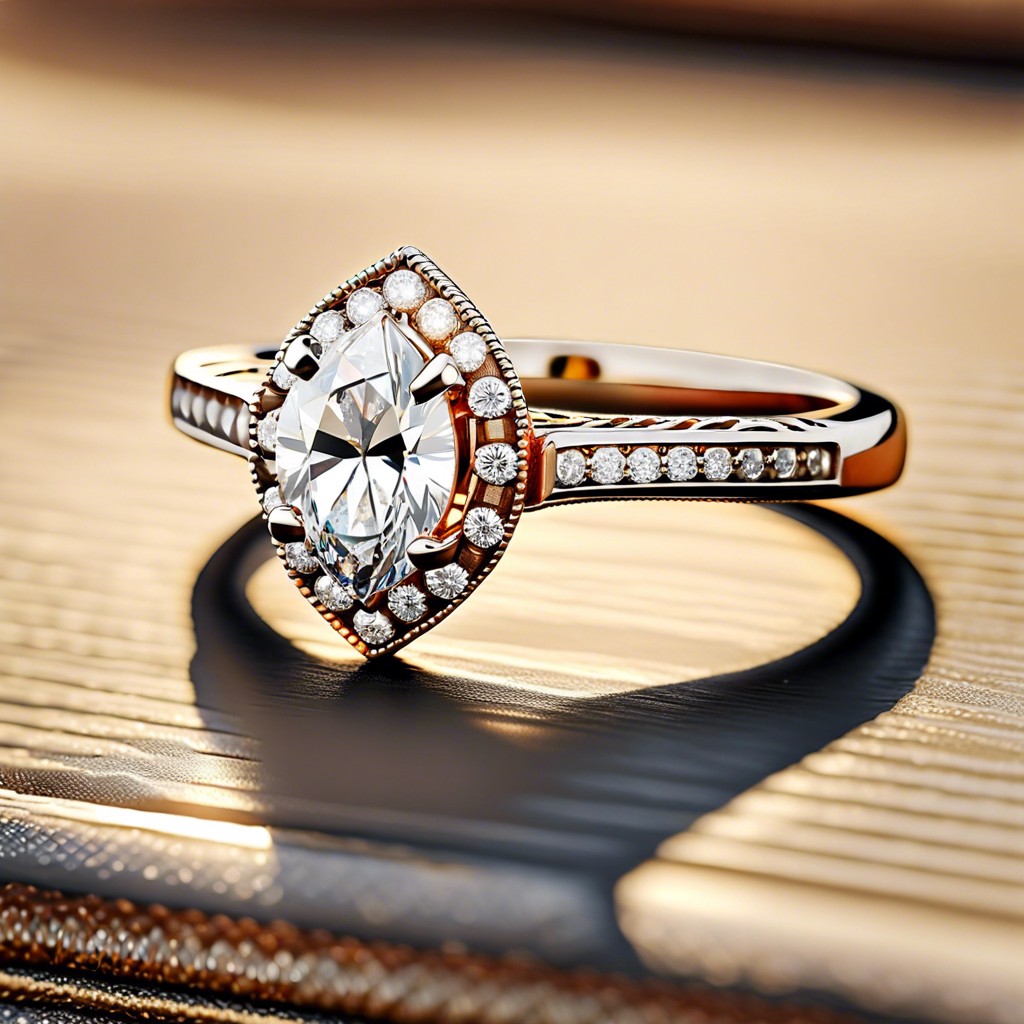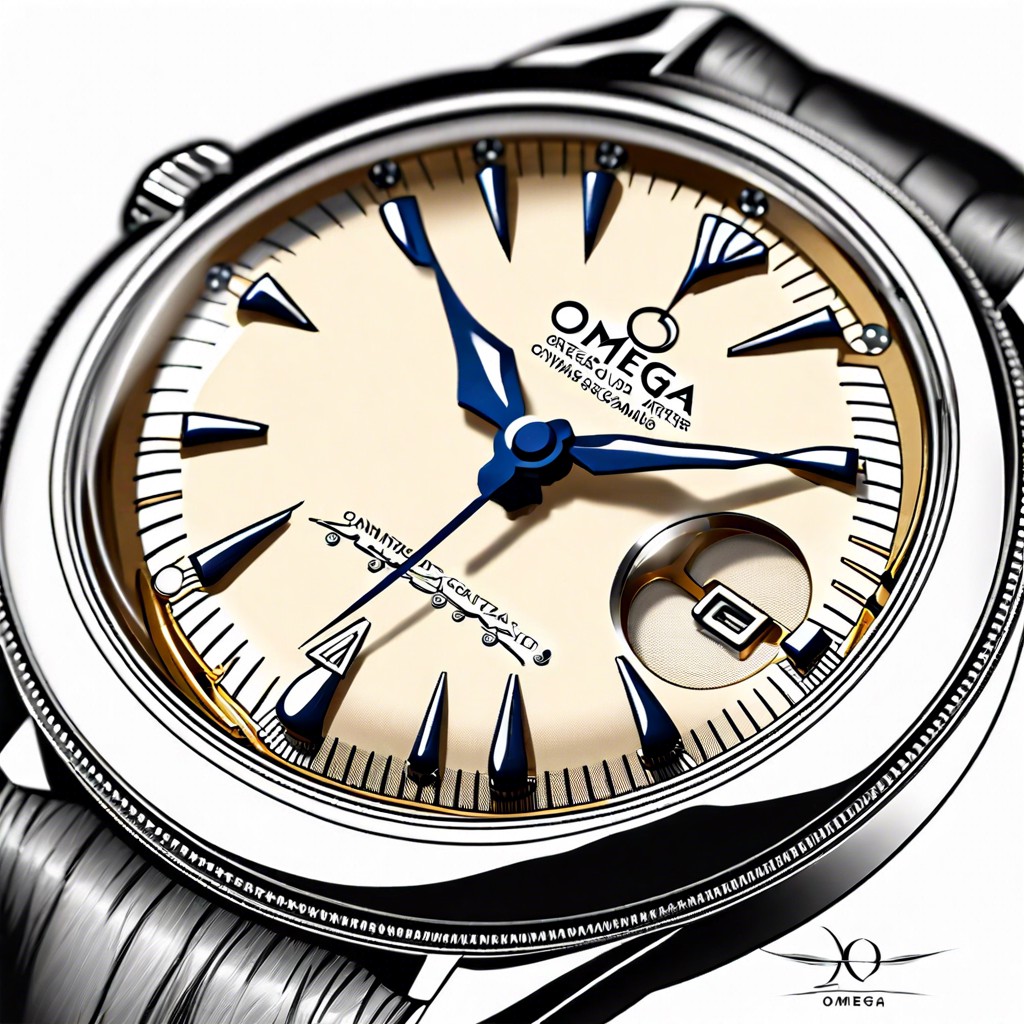Last updated on
Dive into the world of Majolica oyster plates because these decorative pieces intertwine art and functionality in the most breathtaking manner.
Key takeaways:
- Majolica oyster plates originated in the mid-19th century
- Made from earthenware clay with colorful oxide glazes
- Look for vibrant glazes, stilt marks, and maker’s marks to authenticate
- Plates feature nature-inspired designs and varied color palettes
- Produced in different regions with unique styles and functionality
Historical Significance of Majolica Oyster Plates
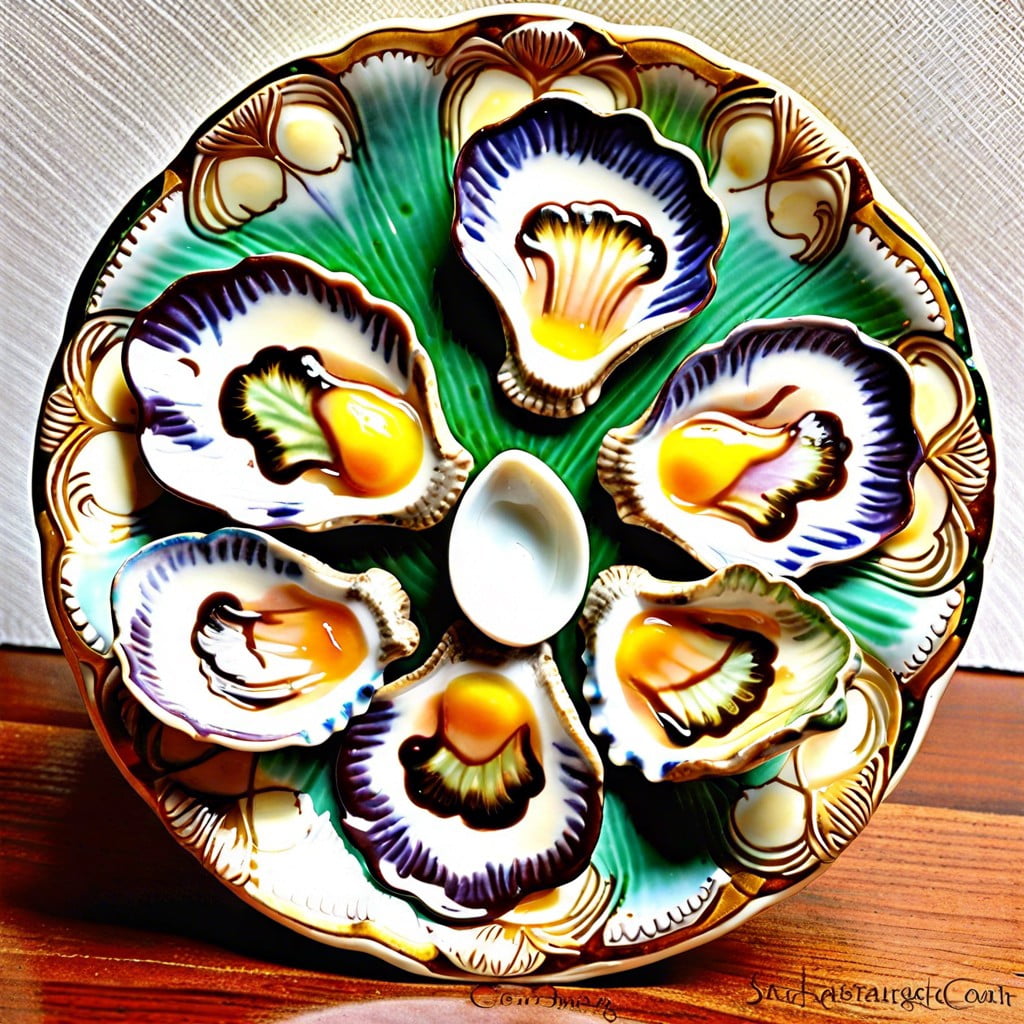
Originating in the mid-19th century, these colorful earthenware pieces reflect the Victorian era’s fascination with elaborate dining and unique presentation.
At a time when oyster consumption was at its peak, these plates were specifically designed with pockets to hold oysters, creating not only a practical dining solution but also a decorative display at affluent tables.
Produced by European and American potteries, the most sought-after examples hail from the Victorian period, although production continued into the early 20th century.
They encapsulate the artistry and innovation of the time, as each plate typically showcases vibrant glazing techniques that were a hallmark of majolica ware.
The integration of functionality and aesthetic appeal is a testament to the period’s craftsmanship and dining culture.
Materials and Manufacturing Techniques
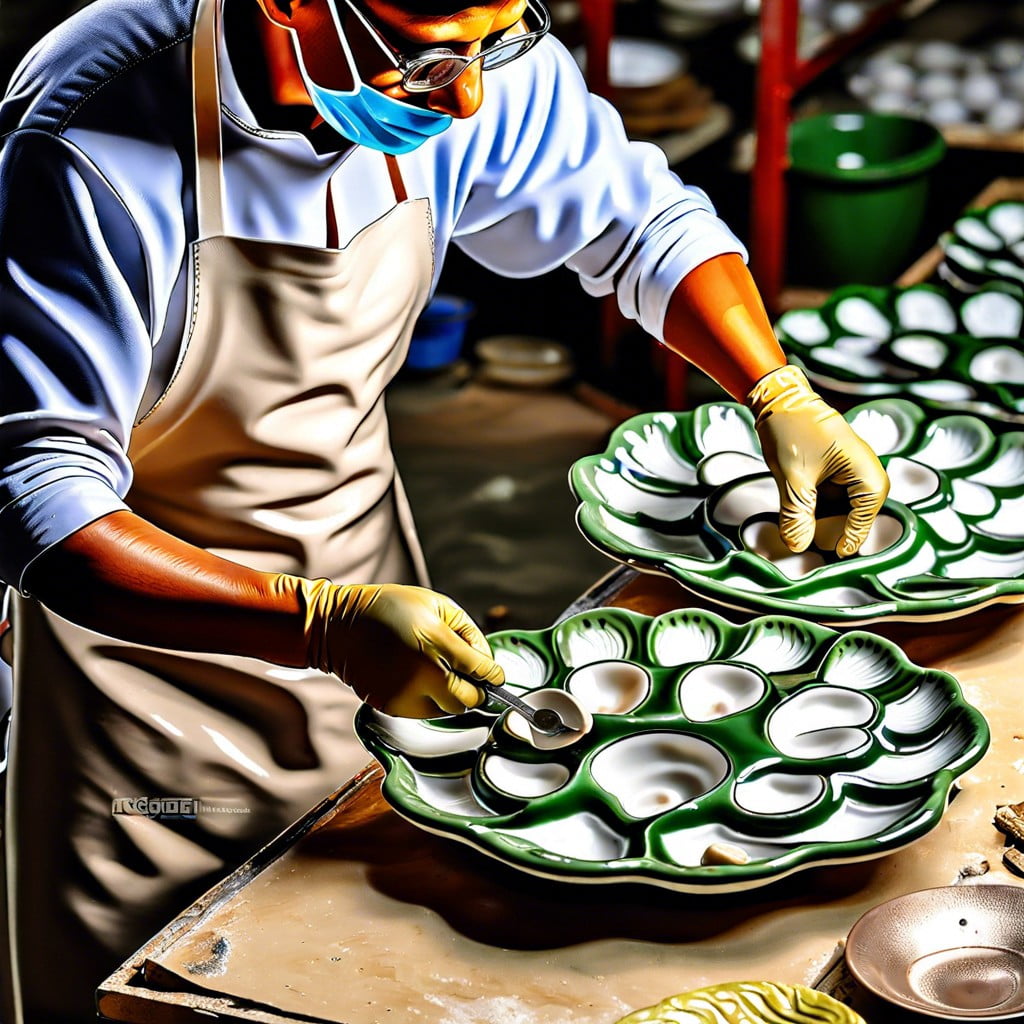
Majolica pottery, including oyster plates, is crafted from earthenware clay. This type of ceramic is coated with an opaque tin glaze that provides an ideal background for applied colorful oxides. The vivid hues, a defining characteristic of Majolica, result from metallic oxides, such as cobalt for blues, chromium for greens, and antimony for yellows.
After the first firing, artisans hand-paint the designs onto the bisque-fired piece.
The multi-step process involves applying each color separately, with each requiring its firing to set the glaze. Consequently, the layered colors create a uniquely textured and three-dimensional appearance. This technique allows for intricate and elaborate patterns, often reminiscent of the marine life motifs found on oyster plates. Notably, it’s the combination of the tin glaze and successive firings that give Majolica its durability and lustrous finish, despite its initial softness before kiln-hardening.
Identifying Authentic Majolica Oyster Plates
To discern authentic pieces from reproductions, examine the plate’s glaze and craftsmanship. Genuine majolica typically features a vibrant, opaque glaze with occasional minor imperfections due to the handcrafted nature of its production. Look for the characteristic rich colors, such as turquoise, mustard yellow, and cobalt blue.
The plate’s reverse may reveal significant clues. Authentic majolica often has a fully glazed back with stilt marks—small points where the plate rested during firing. An unglazed or partially glazed back suggests a later reproduction or different style of ceramics.
Additionally, check for maker’s marks, as reputable manufacturers often stamped or incised their mark on the piece. Common marks include those from famous producers like George Jones or Holdcroft. However, absence of a mark does not necessarily imply inauthenticity, as not all original pieces were marked.
A thorough inspection might also include a touch test; the texture of an authentic plate is typically smooth with a hefty, robust feel. On the other hand, modern reproductions may feel lighter and less substantial.
Patterns and Designs Common in Majolica Oyster Plates
Majolica oyster plates are renowned for their vivid, nature-inspired patterns which often feature sea-related elements. Typical motifs include the oyster shell itself, seaweed, and other marine life, intricately rendered in bold, contrasting colors that are characteristic of majolica glazing.
The plates generally display a symmetrical arrangement of oyster wells, usually five to six, surrounding a central sauce well, artistically integrated into the design.
The three-dimensional aspect of these designs is a signature of majolica artistry, with raised patterns giving a tactile quality to the plates. Additionally, the background of these plates often includes textures that resemble underwater scenes or the ocean floor, enhancing the thematic presentation of the seafood.
When it comes to color, the palette ranges from soft blues and greens, mimicking the sea, to more vibrant hues like turquoise and pink, creating a colorful tabletop display. This versatility ensures that the plates can complement various dining decor styles and personal tastes.
The border designs may vary, with some plates featuring a simple, refined edge, while others boast elaborate rims with molds that mirror the central theme. This attention to detail extends to the underside of the plate as well, where makers would frequently leave their mark, a practice that provides insight into the plate’s provenance for collectors and enthusiasts.
Cultural and Geographical Variations
Majolica oyster plates were produced in various regions, each bringing a unique flair to this specialized tableware. European majolica, particularly from France, Italy, and the UK, often featured intricate artistry and heavily influenced American designs. French majolica, such as those from the Longchamp factory, favored naturalistic themes and muted colors, while Italian majolica displayed brighter hues and bolder patterns, reflecting Mediterranean vibrancy.
In the United States, especially after the mid-19th century, there was an increasing demand for majolica oyster plates. American versions were distinctive for their vibrant colors and whimsical motifs, embracing the Victorian Era’s love for ornate decoration. While European plates often had a more subdued palette, American producers liked to use a diverse color spectrum that reflected the exuberance of the period.
The geographical variations not only influenced the color and design but also the functionality of the plates. Regions with larger oyster harvests, for example, tended to produce plates with more wells, catering to local eating habits and seafood availability. This adaptability to local culture and customs ensured the wide popularity and enduring presence of majolica oyster plates in antique collections and modern dining tables alike.
Collecting Vintage Majolica Oyster Plates
When delving into the world of collecting these unique pieces, the condition is a paramount consideration. Search for plates without cracks, chips, or significant glaze loss, as these factors can greatly affect their value. It’s also essential to assess the vibrancy of the colors and the clarity of the molded designs, which are characteristic of well-preserved Majolica.
Research is a collector’s best friend. Familiarize yourself with the distinctive markings of reputable manufacturers. Marks can often be found on the underside of the plates and may include the maker’s name, a crest, or a country of origin stamp, which help verify authenticity.
Variety adds intrigue to a collection. Aim to include plates with different patterns, sizes, and origins. This not only provides a visual feast but can also offer a broader representation of the majolica style and its evolution.
Staying informed about market trends is advantageous. Joining collector groups and attending antique shows can provide insights into current demands and pricing, aiding in making wise acquisitions.
Finally, balance personal taste with investment potential. Collecting should be a joy, so choose pieces that resonate with you while considering their potential to appreciate in value over time.
Caring for Majolica Oyster Plates
Majolica oyster plates, with their intricate glazing and delicate structures, demand careful attention to maintain their beauty and longevity. To ensure these antiques continue to grace tables and display cabinets, here are key pointers to follow:
1. Cleaning: Gently hand-wash with warm water and a mild detergent. Avoid abrasive sponges and harsh chemicals, as these can damage the glaze and vibrant colors.
2. Drying: Use a soft cloth to pat the plates dry. Air-drying can leave water spots or lead to prolonged moisture exposure, which may harm the glaze.
3. Storage: Stack plates with a layer of padding, such as felt or paper towels, to prevent scratches. Store in a dry environment to avert any glaze deterioration that humidity can cause.
4. Display: When displayed openly, keep plates away from high traffic areas where they might be knocked over. Use a stable plate stand for support, especially one appropriate for the plate’s weight.
5. Handling: Always support the bottom of the plate when moving it and avoid touching the surface as much as possible to reduce the risk of oils from hands dulling the glaze.
6. Repair: For any chips or cracks, consult a professional restorer specializing in ceramic and pottery repair. Do-it-yourself repair kits might not match the plate’s materials and can decrease its value.
By adhering to these guidelines, collectors can ensure these historical pieces continue to be appreciated for years to come.
Notable Manufacturers of Majolica Oyster Plates
Several notable potteries gained prominence during the 19th and early 20th centuries for their exquisite majolica oyster plates. Among them:
- Minton: Based in Stoke-on-Trent, England, Minton was one of the earliest and most recognized manufacturers. They set the standard with intricate designs and a distinctive palette that included turquoise, cobalt blue, and pink.
- George Jones: Also hailing from England, George Jones is known for the detailed naturalistic motifs and high-quality glazing of their majolica pieces.
- Wedgwood: Another iconic British name, Wedgwood majolica features their signature craftsmanship and timeless designs, with some plates showing more restrained and classical motifs.
- Sarreguemines: This French company is noted for its vibrant use of color and whimsical designs that often feature maritime themes suitable for the oyster plates’ purpose.
- Majolica International Society: While not a manufacturer, this organization is a key reference point for collectors seeking information on various manufacturers and their marks, often providing resources to identify authentic pieces and reputable manufacturers.
- American Majolica: Several potteries in the United States produced oyster plates. The most collectible of these come from Griffen, Smith & Hill (Etruscan Majolica), which offered a wide array of designs.
These manufacturers have left a lasting legacy with pieces that continue to be highly sought after by collectors for their beauty and historic value.
Price Range and Factors Affecting Value
The value of majolica oyster plates can vary widely, often ranging from a few hundred to several thousand dollars. Factors influencing their price include:
- Condition: Chips, cracks, and repairs can significantly diminish a plate’s value. Plates in excellent condition fetch higher prices.
- Rarity: Uncommon designs and plates from specific manufacturers or historical periods are typically more valuable.
- Maker’s Mark: A clear and identifiable maker’s mark can increase a plate’s desirability to collectors, thus raising its value.
- Provenance: Plates with a well-documented history or those linked to prominent figures may command premium prices.
- Complexity of Design: Intricate and unique patterns tend to be more sought after than simpler designs.
- Color: Some colors are less common and more popular with collectors, affecting the plate’s price.
- Glaze Quality: A high-quality glaze without crazing preserves value, as it indicates the piece has been well-maintained.
Understanding these factors helps collectors and enthusiasts make informed decisions when buying or selling majolica oyster plates.
Places to Buy Authentic Majolica Oyster Plates
Antique shops and specialized ceramic stores are prime locations for finding diverse selections of these collectible items. These establishments often have knowledgeable staff who can provide valuable insights into the authenticity and history of each piece.
Auctions, both in-person and online, can be excellent venues for acquiring rarer examples of Majolica oyster plates. Attendees can expect a dynamic marketplace, but should be prepared to research lots and authenticate items before bidding.
Online marketplaces and forums dedicated to antiques have increasingly become popular sources. Platforms like eBay, Etsy, and Ruby Lane offer a plethora of options, enabling buyers to filter searches by era, manufacturer, and price. It is important to evaluate seller ratings and review detailed photographs to ensure purchases meet expectations.
Estate sales and flea markets are also ideal for those on the hunt for these unique plates. These environments often provide opportunities for negotiation and the thrill of discovery, but buyers should be versed in identifying key characteristics to determine true Majolica ware.
For those desiring a secure transaction with a guarantee of authenticity, purchasing from reputable antique dealerships or consultants specializing in Majolica may be preferable. These professionals can offer certificates of authenticity and provide a curated selection, taking much of the guesswork out of the purchase.
Regardless of the shopping platform, enthusiasts are encouraged to familiarize themselves with hallmark signs of authenticity and condition issues to make informed decisions. It’s also helpful to join collector groups or forums to exchange knowledge and stay updated on market trends.

